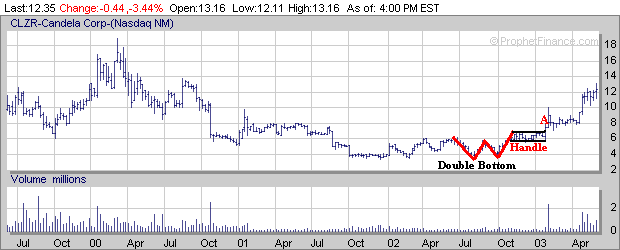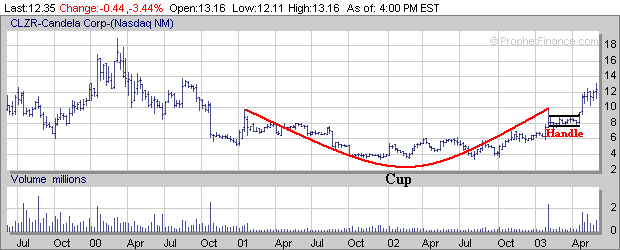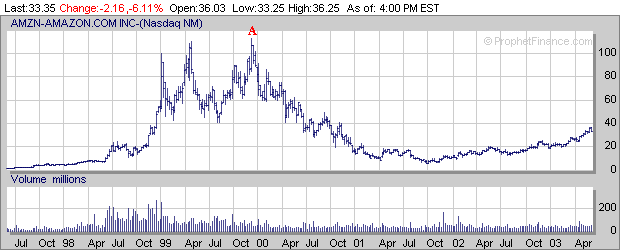|
Using Stop Loss Orders to prevent an Investing Disaster
Many investors fail to use a Stop Loss Order to protect
themselves in case they end up buying a stock at the wrong time. The most
successful investors maybe wrong about 50% of the time when choosing stocks to
invest in however the key is to cut your losses early when a stock fails to
follow through to the upside and minimize your losses. However many
investors fail to do so and allow a small loss to turn into a much bigger one by
not using a proper Stop Loss Order.
A good rule of thumb is to never let a stock drop more than 8%
below the Pivot Point when it reverses to the downside after initially
trying to breakout. Thus this is where a Stop Loss
Order would come into play.
Let's look at a specific example. CLZR first formed a
Double Bottom pattern in 2002 and then traded sideways for 12 weeks while
developing a Handle. While forming the Handle CLZR traded roughly between
$6 and $7 with its Pivot Point near $7. CLZR then broke out strongly in
February and above its Pivot Point (point A) and rose to $10 very quickly.
In this case a proper Stop Loss Order should have been placed 8% or so below the
Pivot Point of $7 near $6.50.

After rising very quickly and stalling out near the $10 level
CLZR had then completed the right side of a 2 year Cup. Over the next 10
weeks CLZR traded sideways again between $7.50 and $9.25 while developing a
Handle. Then in April CLZR broke out again and rose to $12.50 rather
quickly. In this case if you had missed the original breakout in February
you got a second chance in April and should have placed a Stop Loss Order 8% or
so below CLZR Pivot Point of $9.25 near $8.50.

Remember its always important to use a Stop Loss Order just in
case a stock doesn't perform the way you think it will. Allowing a
small 8% loss to turn into something much bigger can be avoided by using a
proper Stop Loss Order as the example below shows.
Imagine if you would have bought AMZN right before it peaked in
the late part of 1999 (point A) near $120 and failed to use a proper Stop Loss
Order once it began to sell off. If you had invested $5000 in it during
the latter half of 1999 and used an 8% Stop Loss Order you would have lost
only $400 as it sold off. If you had held on to it and rode it down to the
$10 level which occurred in the Fall of 2002 you would have lost over $4000
instead.

Click here to signup for a
"Free" Two Week Trial Membership and see which Stocks will provide the
best Investment Opportunities during the rest of 2003
| 


